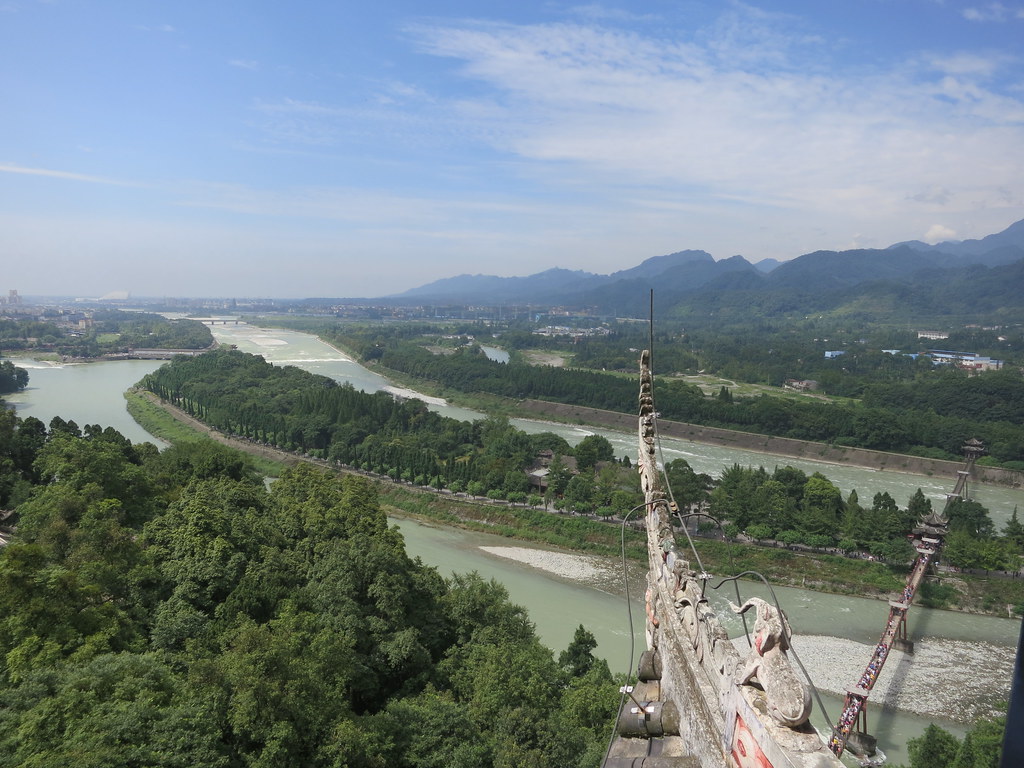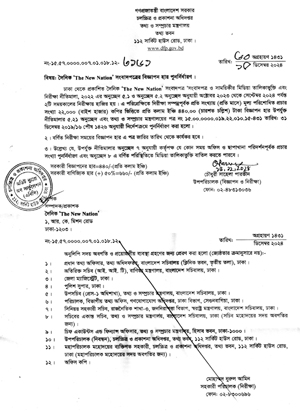Al Mamun Harun Ur Rashid, Back from Chengdu, China :
Nestled in China’s Sichuan Province, the Dujiangyan Irrigation System, constructed over 2,200 years ago, remains the world’s only damless water diversion system still in use, and its relevance resonates far beyond China’s borders now.
This correspondent recently visited the historic site in Chengdu, capital of Sichuan Province, where ancient stone structures and flowing waters tell a story of ingenuity, sustainability, and harmony with nature.
Locals and experts alike shared insights into how the system, built in 256 BC by Governor Li Bing of the Qin State, not only tamed the volatile Min River but also laid the foundation for prosperity in the Chengdu Plain.
It is learned that before Dujiangyan’s construction, the region was plagued by seasonal floods and droughts, with the Min River’s heavy silt and erratic flow wreaking havoc on agriculture and people.
Li Bing found out a revolutionary solution. Instead of blocking the river with a dam, he chose to channel and managed its flow. The result was a system that not only controlled flooding but also ensured a steady water supply for agriculture, domestic use, and industry, benefiting an estimated 23 million people today.
Walking along the riverbanks, one is struck by the elegance of the system’s design. A levee shaped like a fish’s mouth splits the river into two streams-the inner stream, deep and narrow, carries water for irrigation, while the outer stream, shallow and wide, handles floodwaters and sediment.
Seasonal adjustments in water flow are managed naturally, without the need for modern machinery. During dry seasons, more water flows to the inner stream; during floods, the outer stream carries away the excess.
Further downstream, the Flying Sand Weir cleverly uses centrifugal force and whirlpools to remove sediment, while a narrow channel carved into the mountain-known as the Bottleneck Channel-regulates the volume of water entering the plains.
Locals like Zhang Wei regard Dujiangyan with pride and reverence. “It’s not just an irrigation system,” he said. “It represents our ancestors’ wisdom and a way of life. We have relied on it for centuries, and it has never failed us.”
Despite being over two millennia old, Dujiangyan, also a UNESCO World Heritage Site, remains a vital part of Sichuan’s water infrastructure.
Regular maintenance, conducted during the dry season, ensures that the riverbed remains clear and traditional materials like bamboo, timber, and pebbles continue to be used-a testament to the sustainable and low-cost methods employed since ancient times.
For countries like Bangladesh, Dujiangyan offers invaluable insights. As a land crisscrossed by rivers, Teesta River faces sever water shortages during dry seasons due to upstream water diversion and construction of a number of dams by India.
Implementing such a sustainable water management project on the Teesta could enhance water security, reduce dependency, and safeguard the livelihoods of millions in northern Bangladesh – all while preserving the ecological balance.
As Bangladesh and China are talking about water management project on Teesta River, Bangladesh can take lessons and support from China for its ancient experiences on water management to manage the water for irrigation and protecting natural biodiversity.
Even Chief Adviser to the Interim Government Prof Muhammad Yunus during his visit to China has invited Chinese companies to work on Teesta water management.
He has also requested a 50-year master plan from China to manage Bangladesh’s river and water systems. During a meeting in Beijing with China’s Water Resources Minister, Li Guoying, Yunus praised China’s water management progress and expressed interest in learning from their experience.
Even Chinese Ambassador to Bangladesh Yao Wen recently said that China is ready to support Bangladesh for the project on Teesta River.
On the other hand, people of the northern regions in the recent times raised their voices for the construction of the water reservoir and the implementation of the project.
Today, the site Dujiangyan is not only an engineering marvel but also a lesson learning for many countries including Bangladesh for water management.
Meanwhile, Dujiangyan irrigation site is also thriving tourist destination for thousands of people every day to the harmony between man and nature.
People flock here to witness the brilliance of ancient hydraulic engineering-and to enjoy the breathtaking views of the Min River cutting through lush and green mountains.
“It’s amazing to see something so old still functioning perfectly,” said Li Wei, a tourist from Shanghai.
“You feel the wisdom of ancient people who respected nature rather than fighting it,” a Chinese student said.
“I came here to study environmental engineering, and this is a live lesson. We need solutions like this in Southeast Asia too.”
Dujiangyan is not just a relic of the past; it is a beacon for the future, reminding people that the answers to modern challenges may sometimes lie in ancient wisdom.



